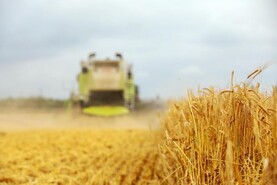In contrast to other sectors, the dairy sector appears to be thriving. 2019 National Farm Survey results show average dairy family farm income of almost €66,000 from an average dairy herd of 86 cows which, compared with other farming sectors, looks impressive.
Yet dairy farm incomes remain much the same as they were prior to quota removal and herd expansion. Also overlooked is the level of unpaid family labour, so crucial to the running of Irish dairy farms and constituting almost a third of a labour unit.
The IFA Dairy Vulnerability Analysis published this week highlights that when adjusted for family labour, the average wage per family unit on a dairy farm (€48,049) is marginally lower than that of an average industrial wage (€48,946).
Importantly, this is before capital repayments on farm borrowings have been made. Sixty-four per cent of dairy farmers had borrowings averaging €117,039 in 2019, with almost half (45%) of this debt long term (>10 years), which would be vulnerable to any disruption in income potential.
Since 2015, Irish dairy exports have increased by €5bn while the IFA estimates that over €2.2bn has been invested by dairy farmers and €1.3bn by milk processors. This has had a major knock-on benefit to rural Ireland, whose dwellers have, on average, half the purchasing power of their urban counterparts.
Nitrates
Last week, the Department of Housing closed the initial consultation on the fourth review of the Nitrates Action Programme. This programme sets out the requirements to which farmers must adhere to protect water quality and underscores the nitrates derogation.
Within the initial consultation, there are suggestions to further increase regulation of what the Department defines as “large herds”, along with farms that zero-graze, among many other possible regulatory changes. While the suggestions are subtle, the intent by Department officials to enhance regulations is palpable. Such changes would undermine the viability of many dairy farmers who have invested heavily on their farms based on output underpinned by the current derogation.
Stark
While many environmental commentators suggest removing the nitrates derogation to protect water quality, policymakers must remain aware of the stark fact that 6,500 dairy farms depend on it.
Additionally, the IFA estimates that over half the dairy cows in the country are on farms stocked above 170kg N/ha.
Interestingly, the Teagasc submission to this consultation demonstrated that reductions in stocking rate may not result in an associated improvement in water quality, something which is often simplified to be the sole recommendation to improving water quality offered by other State agencies.
Instead, Teagasc recommends changes in management practices such as increased grazed pasture utilisation and the preferential management of areas with higher risk of nutrient loss on the farm.
It is assumed that the costs and the disruption in earning potential brought about by more stringent environmental regulation can be carried by the farmer. The IFA report, however, shows that dairy farmers remain vulnerable to a drop in milk price and/or an increased cost of production due to increased regulations.
Policymakers must work to provide solutions that will have a tangible impact on water quality that does not undermine the economic sustainability of farms. A template for this is already in place through the ASSAP programme, where diagnostic actions tailored to local issues have been successful.
Income perspective
There is little doubt that dairy farming has been the success story of primary Irish agriculture over the past 10 years. However, this is as much to do with the low incomes evident in other farming sectors where farm incomes continue to remain at unacceptably low levels.
No business sector, however successful, can sustain static output prices along with increased cost of production.
It would be naïve to assume Irish dairy farming can be any different.






 This is a subscriber-only article
This is a subscriber-only article










SHARING OPTIONS: